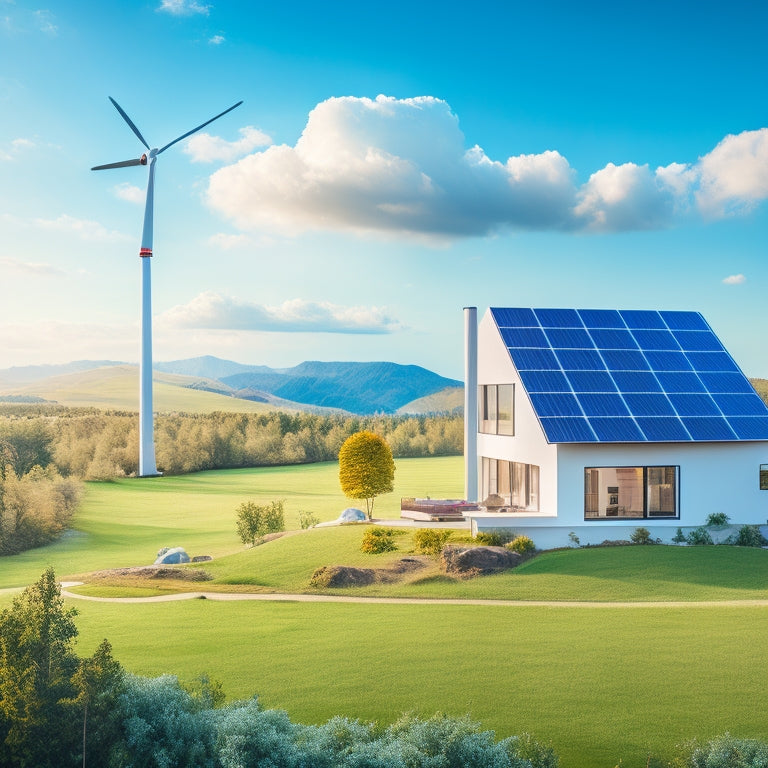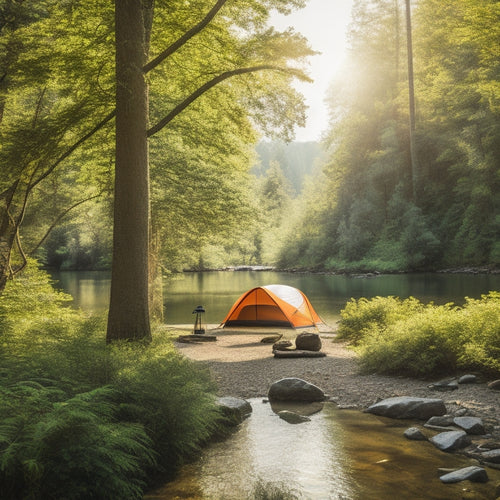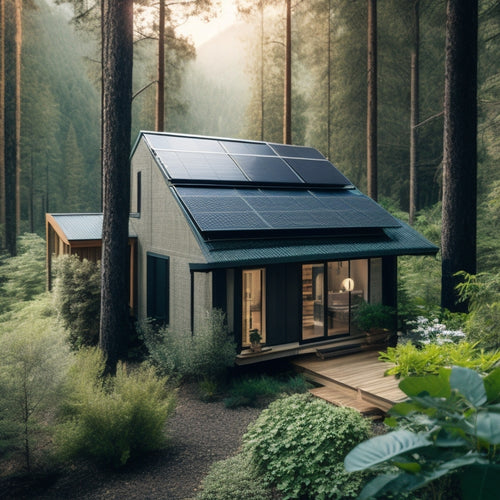
3 Tips for Energy Independence Freedom
Share
You'll take a significant step towards energy independence by enhancing your system's efficiency and self-sufficiency. Start by choosing the right solar panels for your home, considering factors like efficiency, durability, and warranty. Next, maximize your energy harvesting potential by installing panels at the ideal angle and direction, conducting shade mapping analysis, and cleaning them regularly. Finally, consider investigating alternative energy sources like wind turbines and investing in energy storage solutions to make use of excess energy. By implementing these strategies, you'll be well on your way to achieving off-grid energy freedom - and there's more to uncover about fine-tuning your system for maximum results.
Overview
- Assess energy needs and determine suitable renewable energy sources for your specific location to achieve off-grid freedom.
- Ensure proper system sizing through load calculation and consideration of peak sun hours for optimal energy production.
- Utilize battery storage solutions, such as deep-cycle or lithium-ion batteries, to store excess energy for non-sunny periods.
- Optimize solar panel installation by adjusting angle and tilt to increase energy production by up to 20%.
- Regularly clean solar panels to remove debris and dirt that can impact energy output and overall system performance.
Choosing the Right Solar Panels
Most homes require between 15 and 20 solar panels to cover their electricity needs, depending on their size and energy usage.
When choosing the right solar panels for your home, you'll need to take into account the type of panel that suits your energy requirements. There are two main solar panel types: monocrystalline and polycrystalline. Monocrystalline panels are more efficient but pricier, while polycrystalline panels are more affordable but less efficient.
It's crucial to assess key performance indicators for solar panels, including efficiency, durability, and warranty, to maximize energy harvesting and minimize maintenance. High-efficiency solar panels with durable warranties can provide peace of mind with 25-year coverage.
You'll also need to reflect on installation considerations, such as the roof's size, orientation, and shading. Verify your roof gets sufficient sunlight and isn't obstructed by trees or buildings.
Additionally, take into account the warranty, durability, and maintenance requirements of the panels. By carefully evaluating these factors, you can make an informed decision and take a significant step towards energy independence.
Maximizing Energy Harvesting Potential
As you've selected the right solar panels for your home, it's essential to optimize their energy harvesting potential. You need to make certain that your solar panels are installed at the ideal angle and direction to maximize energy production, considering factors such as shade mapping analysis to identify shaded areas and adjusting panel angle and tilt to enhance energy production by up to 20%.
Additionally, you should regularly clean your solar panels to remove debris and dirt that can reduce energy output.
Moreover, consider investing in energy storage solutions, such as batteries, to store excess energy generated during the day for use at night or during power outages.
Achieving Off-Grid Energy Freedom
By going off the grid, you can break free from reliance on public utilities and enjoy a higher degree of energy independence.
To achieve this, you'll need to assess your energy needs and determine the best renewable energy sources for your location. Consider wind turbine options, such as horizontal or vertical axis turbines, to generate electricity.
It's crucial to verify your system is sized correctly, considering factors like load calculation and peak sun hours, to avoid oversizing or undersizing your kit.
Pair these with battery storage solutions, like deep-cycle batteries or lithium-ion batteries, to store excess energy for later use.
Confirm you have a suitable inverter and charge controller to regulate the flow of energy.
With careful planning and installation, you can enjoy the freedom and security that comes with off-grid energy independence.
Frequently Asked Questions
Can I Install Solar Panels on a Rented Property?
You can install solar panels on a rented property, but you'll need to negotiate a solar panel agreement with your landlord, considering rental property considerations like lease terms, maintenance, and potential relocation.
How Do I Maintain My Solar Panels in Extreme Weather?
You'll guarantee your solar panels' ideal performance by regularly cleaning them, especially after extreme weather events, and investing in protective measures like hail-resistant glass and secure mounting systems to withstand harsh conditions.
Are Energy Storage Systems Compatible With Existing Grids?
You're probably wondering if energy storage systems can seamlessly connect with existing grids - the answer is a resounding yes, despite grid integration challenges! Modern energy storage systems are designed for compatibility, ensuring a smooth changeover to energy independence.
Will I Still Have Energy During a Blackout?
During a blackout, you'll still have energy if you've invested in alternative power sources, like solar or wind, and energy storage systems, ensuring blackout preparedness and continuous power supply, regardless of grid outages.
Can I Sell Excess Energy Back to the Grid?
You can sell excess energy back to the grid through net metering, which allows you to offset your energy consumption and potentially earn credits; follow selling energy tips to maximize net metering benefits and increase your energy independence.
Ready to Buy
As you stand on the threshold of energy independence, the horizon stretches out before you like an open road, beckoning you to drive off into a future unshackled from the grid. With the right solar panels, maximized energy harvesting, and off-grid systems in place, you've broken free from the chains of reliance. Your expedition to energy freedom is now a guiding light, illuminating the path for others to follow, as you bask in the radiance of self-sufficiency.
Related Posts
-

Top Eco-Friendly Camping Equipment for a Sustainable Adventure
When you're camping with the planet in mind, opt for eco-friendly gear like tents made from recycled materials and bi...
-

Smart Home Thermostats to Revolutionize Your Space
Smart home thermostats revolutionize your space by providing precise temperature control and optimizing energy saving...
-

Off Grid Solar Batteries
As you shift to off-grid living, you'll rely on high-performance solar batteries to store excess energy generated by ...


